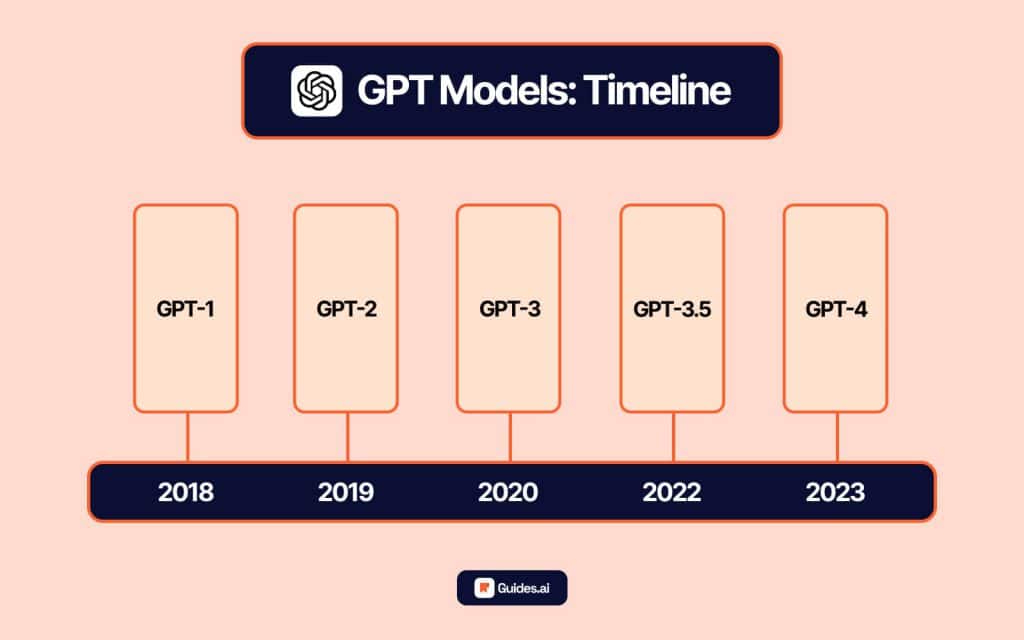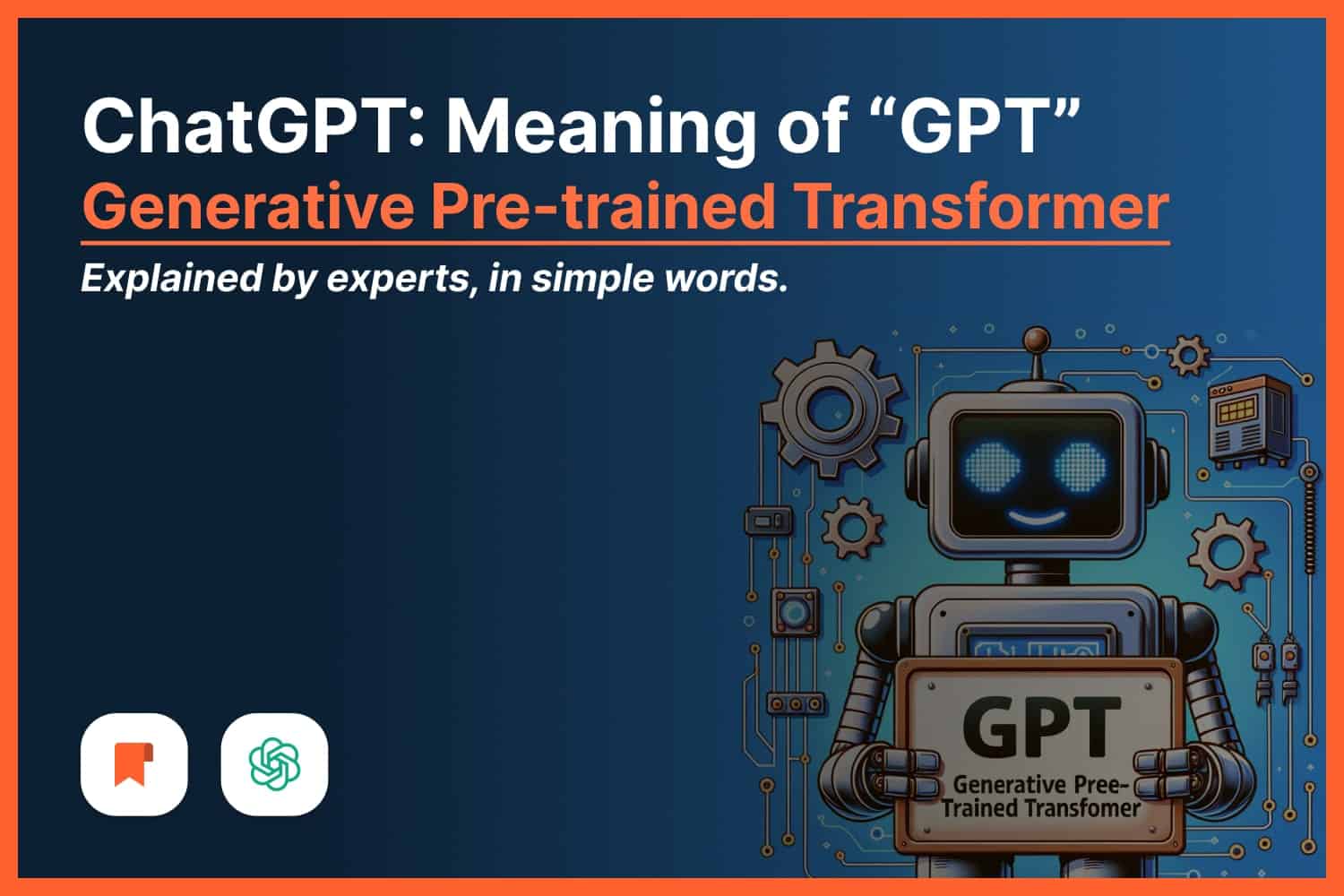Been wondering what does “GPT” stand for in ChatGPT?
Does Generative Pre-trained Transformer sound confusing?
This guide explains it all: meaning + what GPT is + history.
- We won’t bore you with heavy Artificial Intelligence terms.
- Our goal is to explain it all in simple words.
Let’s go.
Answer: What does GPT in ChatGPT stand for?
“GPT” in ChatGPT stands for Generative Pre-trained Transformer.
Here’s an easier-to-digest explanation:
- Generative: It can create text on its own.
- Pre-trained: Already learned from a massive dataset.
- Transformer: The architecture it’s built on.

All of these put together form GPT. Then, GPT technology is used for AI chatbots like ChatGPT.
Purpose: What G-P-T really does
In ChatGPT, the “GPT” part is your go-to for generating human-like text based on the info it’s been trained on.
Explaining every part’s purpose:
- Text Generation: You give it a prompt, it spits out a reply. It’s like auto-complete but way more advanced.
- Conversation: Handles back-and-forths, kinda like you’re chatting with a friend.
- Multi-Tasking: Answers questions, writes essays, creates content. You name it, it tries to do it.
- Learning: Not real-time, but it’s trained on a huge data set to know quite a bit.
Pros & Cons: GPT Technology
Below we’re jumping into why GPT in ChatGPT is good, as well as the bad part.
Let’s start with the pros.
a. Pros
- Human-Like Text: Generates text that closely resembles human writing, making conversations feel natural.
- Versatility: Can handle a wide range of tasks—chatbots, content generation, translations, and more.
- Pre-trained: Extensive training on large datasets means it can generate relevant answers quickly.
- Scalable: Can be fine-tuned to serve specific purposes or industries.
- Low Latency: Capable of generating responses in real-time.
b. Cons
- Data Bias: The model may carry biases present in the training data.
- Ambiguity: Sometimes generates text that’s vague or nonspecific.
- Resource-Heavy: Requires significant computational power for training and deployment.
- Cost: The hardware and cloud computing needed can get expensive.
- No Emotional Intelligence: Can’t gauge user emotions or social cues.
Differences: GPT vs ChatGPT
GPT is the underlying technology, the engine that powers the text generation. ChatGPT, is an AI chatbot which uses GPT technology.
| Feature | GPT | ChatGPT |
|---|---|---|
| Basic Type | Original Model | Chat-ready |
| Main Use | Any text | Chatting |
| Training Data | Diverse web text | Chat-focused text |
| Talk Style | One-off | Back-and-forth |
| Prompt Needs | Specific | Flexible |
| Expertise | General topics | Chat skills |
| Personality | Robotic | More human |
| Response Length | Can be too long | Typically short |
| Where to Find | Through APIs | In-chat services |
| Customizable? | Not entirely | Yes |
Speaking of APIs, we have a guide teaching you how to use ChatGPT’s API.
History: Evolution of GPT models
Below is a list with everything you need to know about all GPT models.
At the moment:
- GPT-3.5 is unlocked in the free version
- GPT-4 is what you get with ChatGPT Plus

Let’s explore this.
2018: GPT-1
- Launch Year: 2018
- Parameters: 117 million
- Focus: Predict next token in text
- Notable Uses: Text classification, query answering
2019: GPT-2
- Launch Year: 2019
- Parameters: 1.2 billion
- Focus: Better language understanding
- Notable Uses: Text generation, language translation
2020: GPT-3
- Launch Year: 2020
- Parameters: 175 billion
- Focus: Multi-purpose, from code to prose
- Notable Uses: Coding, writing, complex query solving
2020: GPT-3.5
- Launch Year: 2022
- Parameters: More than GPT-3, but less than GPT-4 (exact number unknown)
- Focus: Improved efficiency and some feature upgrades over GPT-3
- Notable Uses: Enhanced text generation, better question-answering
Essentially, GPT-3.5 took what was good in GPT-3, made it a bit better, and set the foundation for GPT-4.
2023: GPT-4
- Launch Year: 2023
- Parameters: Unknown, but likely more than GPT-3
- Focus: Improved reliability, vision input
- Notable Uses: Academic tests, text and image tasks
Conclusion
Congrats! You’ve just learned what’s the difference between GPT and ChatGPT.
We really hope this article brought value to you.
Learn how to become more productive with our guides on how to use AI.
Thank you for reading this,
Ch David and Daniel

